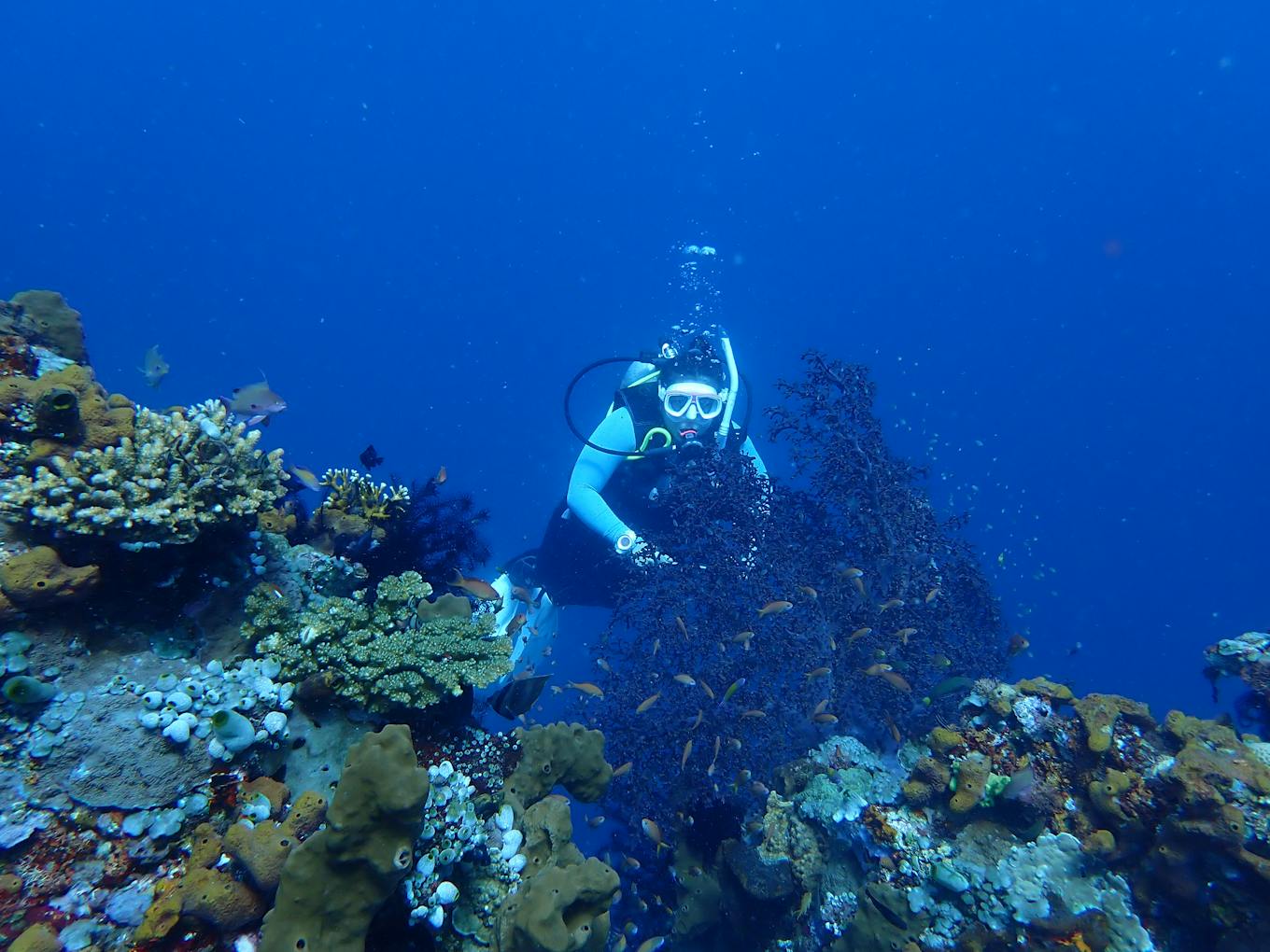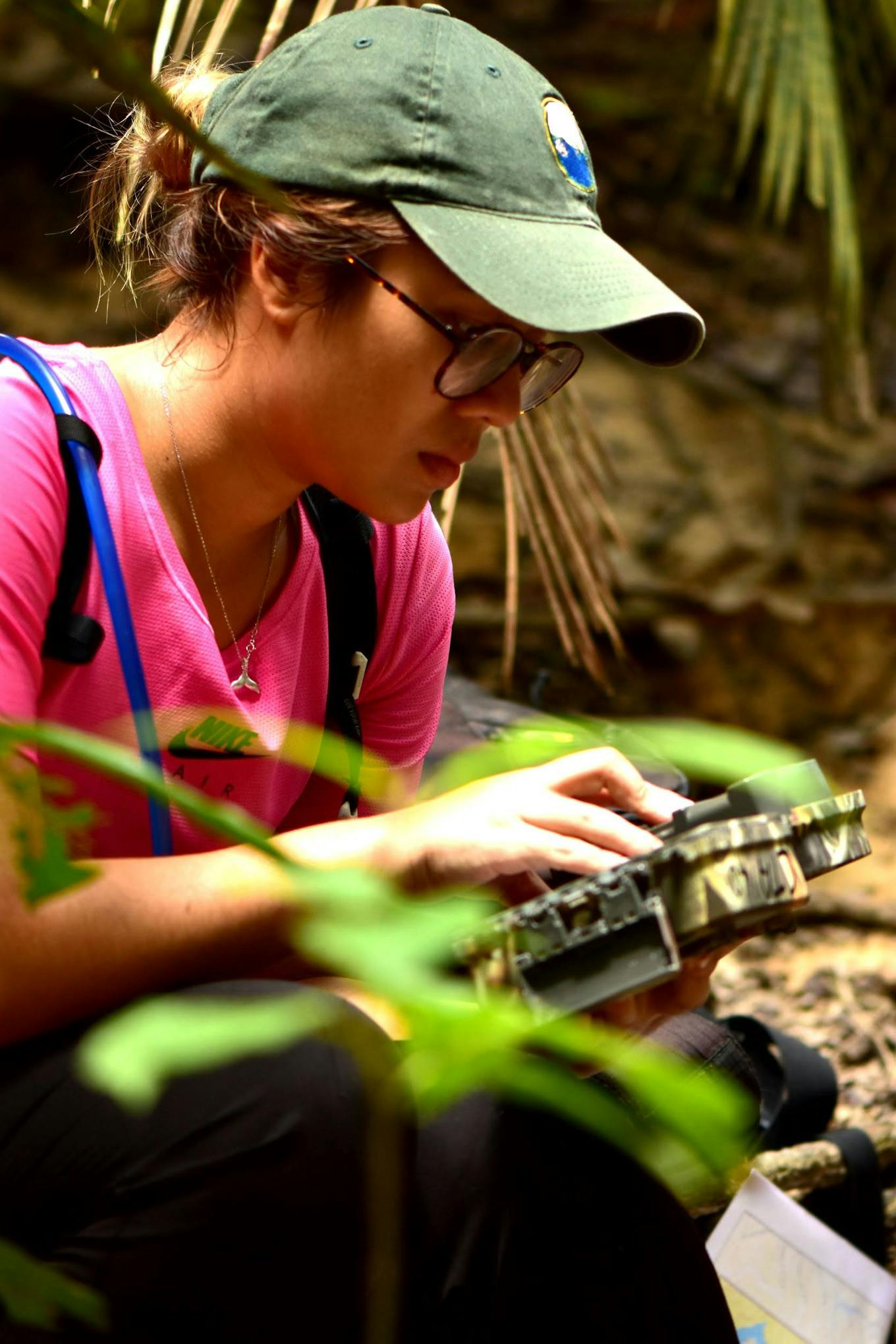When Natasha Zulaikha was conducting her doctorate research on human-elephant conflict in Malaysia, a group of respondents in the study stood out: palm oil smallholders.
To continue reading, subscribe to Eco‑Business.
There's something for everyone. We offer a range of subscription plans.
- Access our stories and receive our Insights Weekly newsletter with the free EB Member plan.
- Unlock unlimited access to our content and archive with EB Circle.
- Publish your content with EB Premium.
Interacting with these locals, mostly in their late seventies, Natasha realised that many of them assumed that people’s sympathies were with the elephants, even though these wild animals had entered farms and plantations, destroying crops. It made her sad, knowing that the smallholders felt that they were not being listened to, or cared for.
Because of this, “they may not want to play a part in the maintenance of mitigation measures [against the elephant raids], such as installed fences and ditches”, observed Natasha. Instead, the farmers avoided taking responsibility for any elephant-related issues and shunned participation in resolving the problem.
Natasha, now a PhD candidate with local research project Management and Ecology of Malaysian Elephants (MEME) and in her final year of study, is researching the impact of elephant crop raids in her home country through the lens of behavioural psychology. It is a relatively new approach in Asia, and has mostly been applied in Western research. Natasha said she embarked on it because she was curious about the motivations behind certain human decisions that led to the destruction of wildlife habitats.
Human-elephant conflict has cost Malaysia losses of nearly RM40 million (US$8.34 million) from 2018 to 2022, according to the environment ministry. Research in Asia has mostly pointed to how these conflict arises when the land used for oil palm cultivation encroaches on the natural habitats of wildlife – the loss of habitat forces elephants to breach plantations in search of food and water, which can lead them to trample or consume oil palm crops.
“I realised that the core of most environmental problems is always people: how we behave and how we make decisions that have impacted the planet,” said Natasha, also the co-founder of Coralku Conservation, a research-driven coral restoration project based on the Malaysian island of Lang Tengah. “The more I spoke to them [the smallholder farmers], the more I realised that the conflict had to do with people. The elephants are just being dragged into it!”
This social science perspective is changing the way researchers study human-wildlife conflict, said Natasha, whose research and advocacy efforts has earned her a place on the Eco-Business Sustainability Leadership Youth A-List 2023. It is an attempt to make sure that our thinking around what drives such conflict reflects the full complexities of human emotions involved, Natasha explained.
Natasha also shared that she sees herself a “middleperson” between people and nature as she seeks to help everyone understand the science behind what is happening to our natural ecosystems. For example, Coralku, which she founded in 2018 with marine ecologist Sebastian Szereday, planted more than 3,000 corals from over 28 species last year and also surpassed 200 “adoptions”, as they got members of the public to directly contribute to planting the corals.
In 2022, Coralku won a grant from the international Coral Research & Development Accelerator Platform to support their collection of data on the most climate-resilient corals at Coralku’s project site in Lang Tengah. More than 2,000 fragments have been screened since September 2022 and this month, the top 20 species that performed best under heat stress tests will be planted in underwater nurseries, shared Natasha.

Coralku Conservation is an ongoing non-profit research project that studies heat resilience of various coral species found near the Malaysian island of Lang Tengah. Pictured is the project’s co-founder Natasha Zulaikha on one of her research dives. Image: Natasha Zulaikha
Coralku had not planned on studying heat resilience of corals when they first started, but the team increasingly noticed bleaching events during their dives. To prevent more coral bleaching, they raced to secure the grant.
“It was either (we get the grant) or Coralku dies…which sounds a bit dramatic, but the project was so time sensitive that we either do it now or not at all,” she said.
Today, she continues to serve as the organisation’s community outreach manager, posting regularly to Coralku’s Instagram account with posts and videos that take followers through the group’s activities. Natasha is also active on her personal social media account, sharing snippets of her adventures in Malaysia’s rainforests and talking about the sustainable choices she makes.
In this interview, she shares what inspires inspired her work, the lessons she learnt being an environmental defender and her biggest challenge she faces as a young conservationist.
How did you get involved with environmental research and advocacy?
I stumbled upon my bachelor’s in environmental science by chance: my mom was helping me look at the list of degrees that were being offered and when I saw environmental science, I thought: “This might be interesting. Let me try that!”
I learnt a lot as I attended field courses and volunteered with multiple non-governmental organisations (NGOs). I was also an avid social media user. In my early twenties, I was so energetic. Everything that I absorbed, I wanted to share. It started with me telling my friends what I was up to on my adventures, and it slowly grew into something bigger.
What was the highlight of your work in 2023?
I travelled for conferences and work for my PhD. I enjoyed my trip to India the most because I got to speak to coffee and tea plantation workers and owners. They have faced conflict [with wildlife] for the longest time but the scale [at which this is happening in India] is much bigger than [in Malaysia] because they see hundreds of human deaths a year. Here, people are mostly at a safe distance from elephants because we don’t live so near them. Seeing the extreme side of conflict definitely helped widen my perspective.
What would you say is the most difficult challenge you’ve faced in the past 12 months?
Nobody has done a behavioural psychology-type study on human-wildlife conflict here, so I try to give myself space and say: “Hey, it’s okay if you don’t know what to do.” I am working in an uncharted area, everything is unfamiliar and there is a lot of doubt over whether I’m doing the right thing and asking the right questions.
It was very difficult for me to understand and accept that. Even now I have to constantly remind myself that it is okay if I don’t know (what the right answers are). What helped was talking to people who have done the research elsewhere. I have a mentor in this field, and supervisors from both the biology and psychology fields. That helped me get through it.

Natasha Zulaikha setting a wildlife camera trap. Image: Natasha Zulaikha
When you look back at your journey, do you think you’ve made any mistakes that you have learnt from?
This is a tough one, but I think it is the way we (as environmental advocates) talk to people. We are very passionate because we know the science, so we try to shove that truth down people’s throats. But I feel like that is one of the things we’ve been doing wrong. I think people are more willing to learn about things related to the environment if you know how to speak to them.
My friends like to tease me about being an eco-warrior, which [was a term] I hated then but now that description makes me think I came off too strong. I used to try to tell people what to do, but now I try to offer options: if you’re this kind of person, you can do this, but if you’re another type, you can choose to do something else. There’s no one way to do things.
You have an active presence on social media, which seems common for many young environmentalists these days. Do you feel pressure to live up to the personal brand you’ve built through the medium?
It is a lot of work and effort to be consistently present online and talking about a niche subject. I personally feel like I’ve been juggling [the work] pretty badly! It started with me just wanting to share with friends, but now I do feel pressure to keep the momentum [of posting regularly] going.
I’ve decided to go for quality over quality now, including in my content creation for Coralku. I’ve been trying to make coral conservation more sexy, so it is more targeted now.
What advice do you have for young people who are also environmentally conscious but more introverted when it comes to social media?
For people who do not want to put their whole life up on the internet, there are so many other things that you can do instead. Just talking to friends and family is the easiest thing to do. Talking to them nicely, not telling them what to do.
What are your biggest concerns as an environmentalist?
My biggest concern currently is to become financially stable. Compared to my friends who’ve been working in the same job for five years and are moving on to different phases in life, I can’t help but think that I worked so hard for everything I like, but I’m not moving at the same pace.
It really sucks, because the main opportunity to earn a stable income is to work in the corporate sector line. But each job has its pros and cons. I feel like working in the corporate sector at a very young age takes away opportunities to learn more about the environment, because you’re bound to that 9-to-5 job. Learning about the environment requires you to be outdoors, experiencing and learning about the ecosystem. It’s a different thing to dive on weekends versus doing so for a week to learn about how all these different organisms interact to make sure that island is a functioning ecosystem.
That’s my biggest struggle because I can’t really achieve that stability but I’m also learning so much. I’m trying to figure out how to bridge these two needs.
Do you see artificial intelligence (AI) as helpful to your work, or would it be a threat?
For the research work on elephants, AI helps because we’re trying to build a prototype of an early warning system or device which can help detect elephants before they cause conflict. I’m not sure what the right term is, but we are “feeding” AI elephant footage from camera traps so that it can better detect and count the number of elephants.
I think AI is cool if it can relieve pressure that people face, for example some lose sleep over patrols and experience physical and mental fatigue. I think AI can definitely help conservation – as long as it’s in the right hands. Use of AI is a threat when it is used for trafficking and poaching.
For marine work, the use of technology is more difficult. I know some people have tried using drones to survey coral reefs and measure coral cover or bleaching, but the Coralku scientists say that nothing beats diving ourselves and looking at the corals, since here are so many nitty-gritty details that technology can miss. The scale of what technology can do underwater is also more limited because you have to think about currents, the fishes and other factors you can’t control for.
The interview has been edited for brevity and clarity.
Natasha Zulaikha was one of 10 young sustainability leaders selected for the Eco-Business Youth A-List 2023. Read our stories with the other winners here.












